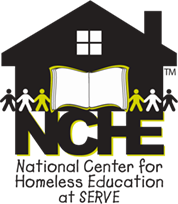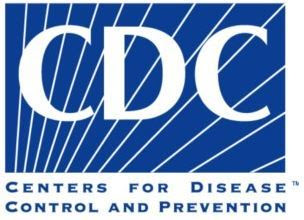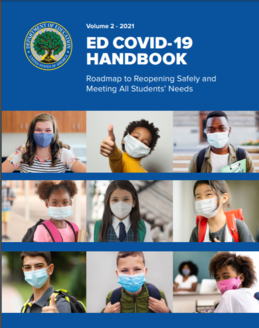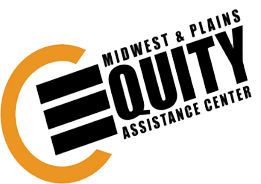
May 2021, Volume 2, Issue 7
Office of Elementary and Secondary Education (OESE)
Office of State Grant and Program Support Newsletter
 |
|
ATTENTION: This newsletter features funding opportunities from the Office of Indian Education.
|

From the Deputy Assistant Secretary
Letter From Ruth Ryder, Deputy Assistant Secretary for the Office of State Grant and Program Support

Dear Partners and Stakeholders:
May is Mental Health Awareness Month, and I would like to use this as an opportunity to shine a spotlight on a critical issue. We all know that awareness of mental health issues is important to child development, but this pandemic has really brought that fact to the forefront. We need to ensure that mental health and learning recovery receive equal attention. For students, part of education is going to school to engage with friends and favorite teachers, in a safe place to learn and grow, and have predictable routines. When schools moved to virtual, children weren’t able to see their friends, and those routines changed overnight. There was an impact — seen or unseen.
As we reopen or sustain i-person learning, it is important to maintain a focus on mental health as we consider how best to help our students emerge from this pandemic. Especially since many have not only experienced a loss of routine, but also have experienced a family member who has been impacted by COVID-19. In this month’s newsletter we have noted several mental health-related resources, including those on trauma-informed approaches to social, emotional, and behavioral learning, and on supporting the mental health of LGBTQ+ students in schools. In addition, you can always find social, emotional, and behavioral support resources on the OESE COVID-19 resources website.
Speaking of resources, the Department released its second volume of the ED COVID-19 Handbook, which covers three main topics: creating safe and heathy learning environments, addressing lost instructional time, and supporting educator and staff stability and well-being. If you look through the handbook you will notice that there is not only a section on social, emotional, and mental health resources for students but also resources for supporting educator and staff well-being.
In addition to the rollout of the ED COVID-19 Handbook, Volume 2, April was a busy month for OESE with the release of the Best Practices Clearinghouse, and several new webinars focused on COVID-19 mitigation in K-12 and early childhood child care settings. Don’t forget that if you have examples of practices that worked well supporting students to please submit them to Bestpracticesclearinghouse@ed.gov. You can read more about the clearinghouse in this issue as well as the Summer Learning and Enrichment Collaborative, which we also kicked off in April.
We are excited to continue to support your important work as we wind up the 20-21 school year and look forward to a new beginning in September.
Best,
Ruth Ryder
|

Featured Technical Assistance Center: National Center for Homeless Education

Funded by the U.S. Department of Education, the National Center for Homeless Education (NCHE) serves as the Department’s technical assistance center for the federal Education for Homeless Children and youth (EHCY) grant program. NCHE provides a suite of technical assistance opportunities and resources to grantees, including in-person (and virtual) technical assistance, peer-to-peer learning communities, on-demand virtual training courses, tip sheets, and research briefs. In addition to providing direct supports for EHCY grantees, NCHE also works with schools, service providers, parents, and other stakeholders to ensure that students experiencing homelessness can enroll in and succeed in school. NCHE maintains a comprehensive website and a helpline (via phone and email) for grantees and stakeholders. NCHE is operated by the SERVE Center at the University of North Carolina at Greensboro, under the leadership of Director George Hancock, Deputy Director Christina Dukes, and Deputy Director Jan Moore.
NCHE’s website houses numerous resources for grantees and stakeholders, including:
- Determining Eligibility for McKinney-Vento Rights and Services: This issue brief unpacks the definition of homeless under the McKinney-Vento Homeless Assistance Act and provides practitioners with a step-by-step guide for determining program eligibility.
- Education Goals and Supports: A Guided Discussion Tool: NCHE designed this tool for educators, homeless response service providers, and other community partners working with youth and young adults (YYA) experiencing homelessness to help YYA clients identify and evaluate education and career pathways.
- State-level Data and Contact Information Webpage: NCHE’s website features data on each state and its EHCY program via NCHE’s interactive data map. In addition to state-specific data, the interactive map also features contact information for each state’s State Coordinator for Homeless Education.
|

Meet Department Staff Member Bryan Thurmond
Learn more about Bryan Thurmond, an education program specialist, in the Office of Elementary and Secondary Education’s Office of School Support and Accountability. Bryan serves as the lead program officer for NCHE.
How long have you been at the Department?
What do you most enjoy about working at the Department?
- My role at the Department allows me the unique opportunity to take a bird’s eye view of program implementation across the country, and this unique perspective allows me to connect practitioners and facilitate the sharing of resources to achieve our common goal of supporting highly mobile student populations. It is truly an honor to work alongside practitioners and subject matter experts from state, local, and federal jurisdictions, and I feel humbled each day to serve students and families.
What is one thing you’d like to see happen for NCHE in the next year?
- The COVID-19 pandemic has created unique challenges for students experiencing homelessness, and NCHE has been an essential partner for EHCY grantees throughout the pandemic. The American Rescue Plan Act of 2021, recently signed into law, included an appropriation of $800 million to help state and local practitioners identify children and youth experiencing homelessness and address the unique pandemic-related challenges of this population. These funds will provide an essential opportunity for states and districts to support students experiencing homelessness during the pandemic (and months beyond). I am excited to partner with the subject matter experts at NCHE to design and provide meaningful, high-quality, and timely technical assistance that will help our grantees effectively use these emergency funds.
|

Centers for Disease Control and Prevention Updates

CDC Guidance for Child Care, Schools, and Youth Programs
The Centers for Disease Control and Prevention (CDC) maintains a webpage that provides information for child care, schools, and youth programs to plan, prepare, and respond to the COVID-19 pandemic. Topics include operating schools during COVID-19, decision-making indicators for reopening, testing and contact tracing, communication tips, and returning to in-person learning, among others.
COVID-19 Vaccines for Teachers, School Staff, and Child Care Workers
This CDC webpage provides the latest information for teachers, school staff, and child care providers on how to get vaccinated. It includes an updated list of child care workers who can get vaccinated under the March 2 directive from the US Department of Health and Human Services regarding vaccinations for educational and child care workers. The CDC also developed a related toolkit, with posters, fact sheets, newsletter articles, and social media graphics, to help communicate and publicize vaccination efforts. Additional resources that are written in plain language, and in multiple languages, include: COVID-19 Vaccines, Communication Resources for COVID-19 Vaccines, Myths and Facts about COVID-19 Vaccines, and Benefits of Getting a COVID-19 Vaccine.
Asthma-Friendly Schools: Strategies to Reduce the Risk of COVID-19 Transmission and Improve Indoor Air Quality
On May 6 from 1:00 p.m. to 2:30 p.m. ET the Centers for Disease Control and Prevention and the U.S. Environmental Protection Agency will host a webinar on how to utilize their guidance and tools to choose safer disinfectants, effectively clean school facilities, and provide recommended ventilation and filtration to not only mitigate the risk of SARS-CoV-2 transmission but to create healthy learning environments for all students and staff, including those with asthma. To register for this event, visit this website.
Guidance for Operating Youth and Summer Camps During COVID-19
Youth and summer camps administrators, in collaboration with state, local, territorial, and tribal health officials, can adapt the recommendations in this guidance to meet the unique needs and circumstances of the populations served. Implementation should be guided by what is acceptable, and tailored to the needs of each community. This CDC guidance, updated on April 24, is meant to supplement, not replace, any state, local, territorial, or tribal health and safety laws, rules, and regulations with which camps must comply.
|

Reopening Schools: Executive Order, Best Practices Clearinghouse, Summer Learning, and More

Executive Order: Safer Schools and Campuses Best Practices Clearinghouse
On Jan. 21, President Biden issued Executive Order 14000 directing the Department to create the Safer Schools and Campuses Best Practices Clearinghouse. The clearinghouse is a place to highlight lessons from the field in support of students, teachers, faculty, and staff, as schools and campuses continue to reopen following closures due to the COVID-19 pandemic.
As part of clearinghouse activities, the Department launched a new webinar series entitled “Lessons from the Field,” which runs bi-weekly through June and discusses the following topics across early childhood, K-12, and postsecondary education:
- Safe and healthy environments.
- Providing supports to students.
- Teacher, faculty, and staff well-being, professional development, and supports.
The clearinghouse highlights lessons learned and best practices that can help schools and districts identify opportunities to best utilize American Rescue Plan (ARP) funds to meet their unique needs. The clearinghouse includes resources that target the needs of students, teachers, faculty, and staff in early childhood programs, K-12 schools, and colleges and universities across the same three topic areas as the webinar series, as noted above.
Please visit https://bestpracticesclearinghouse.ed.gov/ for more information about the clearinghouse.
|

Request for Information on Supporting the Reopening and Continuing Operation of Schools, Colleges and Universities, and Early Childhood Education Providers
The Department welcomes lessons learned and best practices from the field for potential inclusion in the Safer Schools and Campuses Best Practices Clearinghouse. This request includes resources with an education equity focus. Submissions should be sent via email to: Bestpracticesclearinghouse@ed.gov. Please find additional submission information in a March 17, 2021, Federal Register notice.
|

Department Releases ED COVID-19 Handbook, Volume 2
On April 9, the U.S. Department of Education released the COVID-19 Handbook, Volume 2: Roadmap to Reopening Safely and Meeting All Students' Needs. This resource provides strategies in addition to those in Volume 1 for safely reopening all of America's schools and to promote education equity by addressing opportunity gaps that have been exacerbated by the pandemic. It focuses on research-based strategies to address the social, emotional, mental health, and academic impacts of the pandemic on students, educators, and staff, such as how to address any potential anxiety or depression some may face as a result of the COVID-19 pandemic and nearly a year of remote learning.
|

Lessons From the Field: Guidance for Early Childhood Education and Strategies for Family and Community Engagement
The Department recently hosted two webinars in its ongoing Lessons from the Field webinar series.
On April 14, the Department hosted Guidance for Early Childhood Education Programs and Providers. This session featured a panel of practitioners who have worked to ensure the safety and well-being of the children and families they serve by implementing CDC guidance while providing early childhood education and child care. After a brief overview of the latest guidance from the CDC related to COVID-19 mitigation strategies in early childhood care, practitioners shared lessons learned and challenges they overcame to sustain safe operations. See the event webpage for more on this webinar.
On April 28, the Department hosted Family & Community Engagement and Returning to In-Person Instruction. This webinar featured practitioners with notable success in effective strategies for engaging families and communities while re-opening schools following the pandemic. The session also included a brief overview of the latest information from the Department related to family engagement, and promising practices from practitioners on meaningful family and community engagement. See the event webpage for more on this webinar.
|

Summer Learning & Enrichment Collaborative National Convening
On April 26 and 27, the Department hosted a National Convening to mark the launch of the Summer Learning & Enrichment Collaborative and issued a call to action to states and their partners to use new ARP funding to build summer programs that effectively address the summer learning and enrichment needs of students, especially underserved students and those disproportionately affected by the pandemic. The collaborative, a partnership of the Department with support of the Comprehensive Center Network, the Council of Chief State School Officers and the National Governors Association, and other national education partners, will bring education leaders and stakeholders together to form state coalitions as they develop their plans for this summer, with a focus on students who have been disproportionately impacted by the pandemic. The collaborative will help build capacity for states and school districts, in partnership with other key stakeholders, to use ARP Elementary and Secondary School Emergency Relief (ESSER) Funds to identify and implement evidence-based summer learning and enrichment strategies that meet the needs of all students. To learn more about the collaborative and access materials from the convening, visit the Summer Learning and Enrichment Collaborative Webpage.
|

Technical Assistance Resources: Mental Health and More

Social, Emotional, and Behavioral Learning and Trauma-Informed Practice
This collection of resources by the National Comprehensive Center focuses on trauma-informed approaches for social, emotional, and behavioral learning. The collection is designed to increase the capacity of state and district leadership to support their school communities. It includes universal capacity-building resources, as well as tools that are targeted to specific needs and contexts, such as schools in rural communities, or schools that are in the early stages of implementing social emotional learning strategies.
|

Supporting the Mental Health of LGBTQ+ Students in Schools
The Region III Midwest and Plains Equity Assistance Center (MAP Center) recently released this data tool, which highlights research on the effects homophobia and transphobia on the mental health of LGBTQ+ students, and provides strategies and resources that teachers and administrators can use to address related issues. This tool includes three infographics to help the audience understand this information, and to share it with others, in an accessible and engaging way.
|

Designing for Diversity Part 1: Where is Equity and Inclusion in Curriculum Design?
This brief by the
![]()
About the Author
Ruth Ryder is the Deputy Assistant Secretary for the Office of Office of State Grant and Program Support in the Office of Elementary and Secondary Education (OESE) at the U.S. Department of Education. In this role, Ms. Ryder oversees a broad range of management, policy, and program functions related to formula and discretionary grant programs under the Elementary and Secondary Education Act, as amended by the Every Student Succeeds Act (ESEA). Ms. Ryder was previously the deputy director of the Office of Special Education Programs in the Office of Special Education and Rehabilitative Services, which she joined in 1988. Prior to joining the Department, Ms. Ryder was a program administrator in a Washington state school district. There she had responsibility for the Elementary and Secondary Education Act Title 1 and Title II programs, state-remediation, gifted education, outcome-based education, and state- and district-wide testing programs. Ms. Ryder has a bachelor’s degree in psychology and elementary education and a master’s degree in special education.
| |

